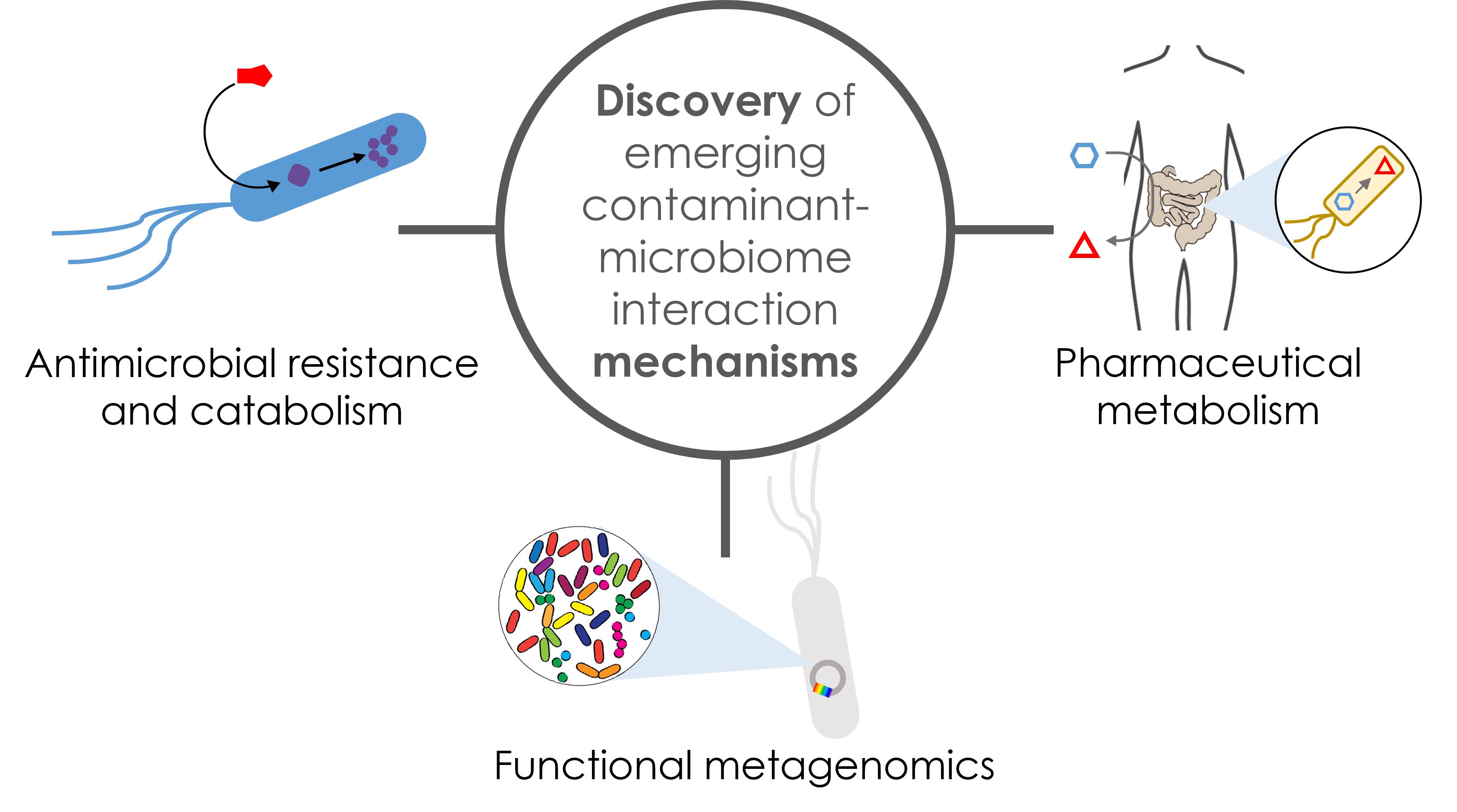Description
Soil and host-associated microbiomes are well-known reservoirs for antimicrobial resistance genes including genes that confer resistance to clinical antibiotics. While many of these genes are well characterized, the tremendous diversity of microbiomes means that many novel and clinically important resistance mechanisms remain to be identified. We have identified several novel variants of streptothricin resistance genes as well as a new mechanism of resistance to this class of antibiotic from the soil microbiome, novel tetracycline and colistin resistance genes in the gut microbiome of wild geese, and have characterized new examples of chloramphenicol reductase enzymes from human pathogens. Discovery and characterization of these mechanisms and their evolvution and regulation can teach us about the ecology of antibiotics in the environment and suggest ways to future-proof new antimicrobials.
We have also previously discovered and characterized a pathway in multiple soil bacteria to use penicillin as a sole carbon source. The pathway consists of β-lactamase inactivation of the antibiotic, amide hydrolysis of the product to release phenylacetic acid, and breakdown of phenylacetic acid into products that enter central metabolism. We are now investigating catabolism pathways for other antimicrobials besides penicillin. Discovery of enzymes and pathways involved in antibiotic catabolism could lead to new opportunities for semi-synthesis of novel compounds and new approaches to remediating antibiotic pollution in the environment.
Publications
- Mullowney MW, Maltseva NI, Endres M, Kim Y, Joachimiak A, Crofts TS,(2022) Functional and structural characterization of diverse NfsB chloramphenicol reductase enzymes from human pathogens. Microbiology Spectrum, 10 (2). e00139-22. [PDF]
- Crofts TS, McFarland AG, Hartmann EM (2021) Mosaic Ends Tagmentation (METa) assembly for extremely efficient construction of functional metagenomic libraries. mSystems, 6 (3). e00524-21. [PDF]
- Crofts TS, Sontha P, King AO, Wang B, Biddy BA, Zanolli N, Gaumnitz J, Dantas G (2019) Discovery and characterization of a nitroreductase capable of conferring bacterial resistance to chloramphenicol. Cell Chemical Biology. 26 (4). 559-70.[PDF]
- Crofts TS, Wang B, Spivak A, Gianoulis TA, Forsberg KJ, Gibson MK, Johnsky LA, Broomall SM, Rosenzweig CN, Skowronski EW, Gibbons HS, Sommer MOA, Dantas G (2018) Shared strategies for β-lactam catabolism in the soil microbiome. Nature Chemical Biology, 14 (6). 556-64.[PDF]
- Crofts TS, Wang B, Spivak A, Gianoulis TA, Forsberg KJ, Gibson MK, Johnsky LA, Broomall SM, Rosenzweig CN, Skowronski EW, Gibbons HS, Sommer MOA, Dantas G (2017) Draft genome sequences of three β-lactam-catabolizing soil Proteobacteria. Genome Announcements, 5 (32). 8-10.[PDF]
- Crofts TS*, Gasparrini AJ*, Dantas G (2017) Next-generation approaches to understand and combat the antibiotic resistome. Nature Reviews Microbiology, 15 (7), 422-34.[PDF]
Press
- Bacteria may be powerful weapon against antibiotic resistance [The Conversation, May 2018 | Terence Crofts]
- These Bacteria Can Help Fight Antibiotic Resistance [Science Friday, May 2018 | Katie Hiler]
- Wash U researchers reveal how some bacteria are able to eat antibiotics [St. Louis Public Radio, May 2018 | Shahla Farzan]
- Why some bacteria eat antibiotics and what we can do about it [NBC news, April 2018 | Maggie Fox]
- How penicillin-eating bacteria could help design new antibiotics [ABC news, April 2018 | Belinda Smith]
- Bacteria eat antibiotics, and warn each other of threats [Cosmos, April 2018 | Paul Biegler]
- How Bacteria Eat Penicillin [The Scientist, April 2018 | Shawna Williams]
- Bacteria’s appetite may be key to cleaning up antibiotic contamination [WUSM news release, April 2018 | Tamara Bhandari]
